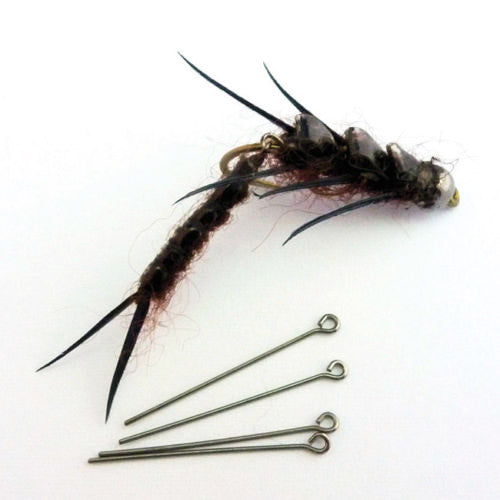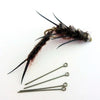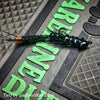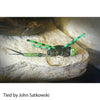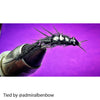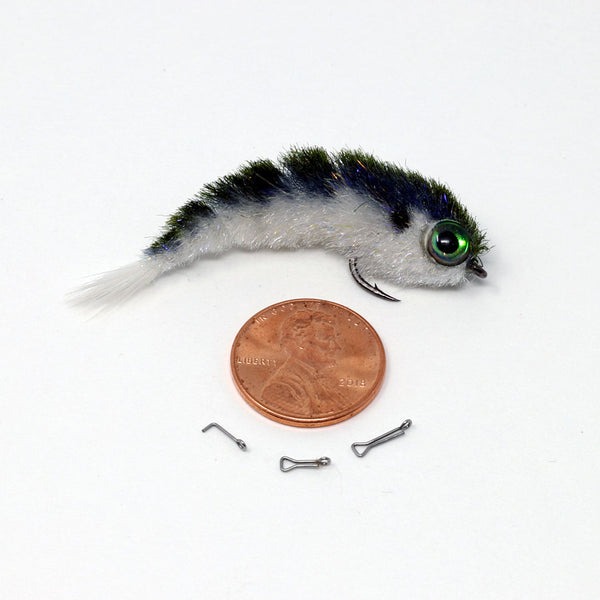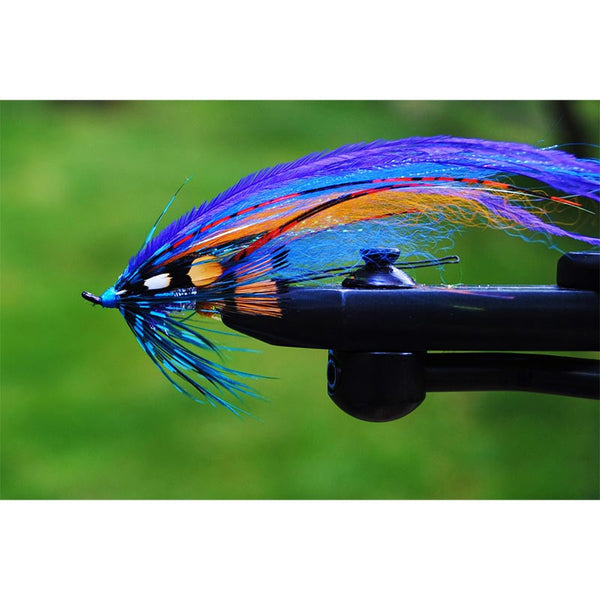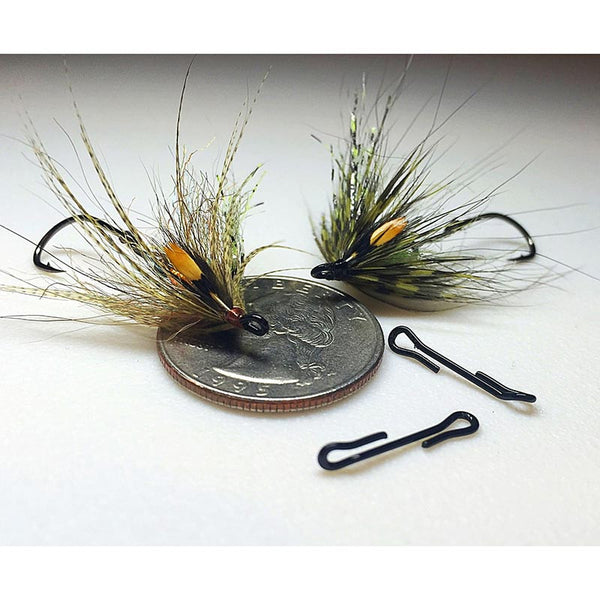Q: Are wiggle-tails a new fly tying concept?
A: No, for many years fly tiers have been tying these types of flies by cutting off the bend of a hook in order to get a shank upon which to tie and attached the tail to another hook. The Articulated Wiggle-Tail Shank is simply a ready-to-tie shank that eliminates the need (and cost) of sacrificing a hook and is also flexible enough to be used for a wide range of fly sizes.
Q: Why is this single size product flexible enough to tie flies in the #6 to #18 hook size range?
A: The Articulated Wiggle-Tail Shank has a wire diameter roughly the equivalent of a #18 hook, but a length of 20mm which is roughly equivalent to a #6 hook. The unhardened steel shank can easily be cut using a small pair of side-cutters to match the size of fly you want to tie . Because of the thin wire diameter, you will always have a thin, elegant tail section of your fly… even for the smallest of flies.
For example: You may want to tie a large, articulated stonefly using a #6 hook and the 20mm shank length may be the perfect size for a nice long body. Then you want to tie a size #16 articulated emerger, so you then simply tie the tail the correct size (maybe 8mm long) and then cut-off the excess shank you don’t need. The tail of your emerger has the right proportion and taper because it is tied on the shank (now only 8mm long) which is still the equivalent diameter of a #18 hook.
In summary, this single product is flexible enough for a wide range of sizes.
Q: Can the shank be bent?
A: Yes, the shank is made of spring steel which means it is rigid enough to be placed in a vice to tie your tail. However, under some pressure it can be bent if you desire a curved tail on your fly. Tie the tail, then bend it. You are no longer restricted to having only a straight tail on your flies. Be creative!
Q: Could dry flies be tied using the shank?
A: Yes, because the wire diameter is roughly the equivalent of a #18 hook it is very thin and light. There is no reason that larger size dry flies or foam flies could not have an articulated tail or rear section. A good example of this is Vince Wilcox’s article, “Articulation Perfection,” which appeared in the Winter 2011 Fly Tyer Magazine. Click on it to read the full article and detailed step-by-step instructions.


